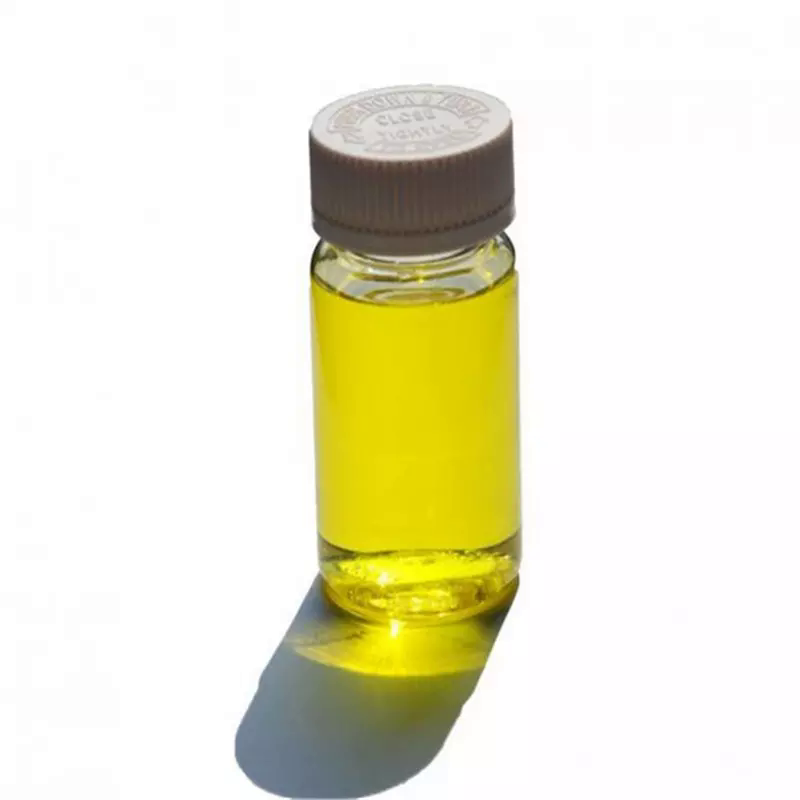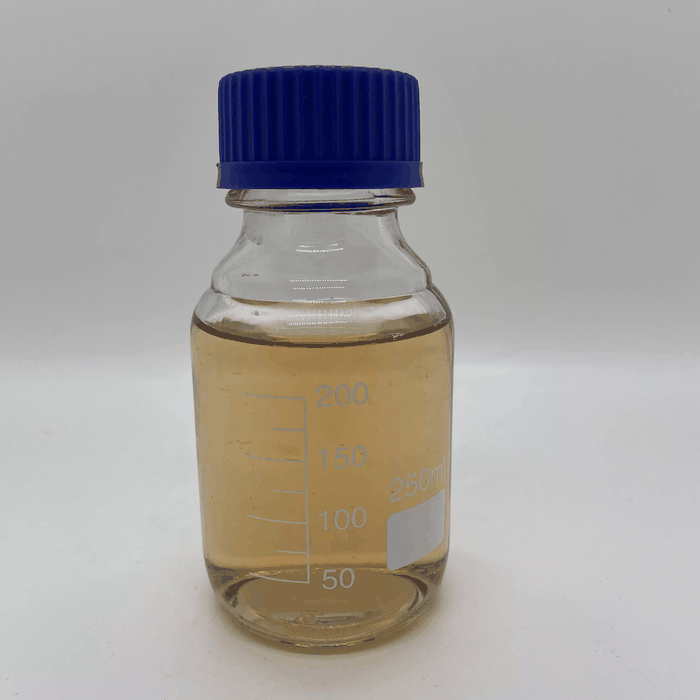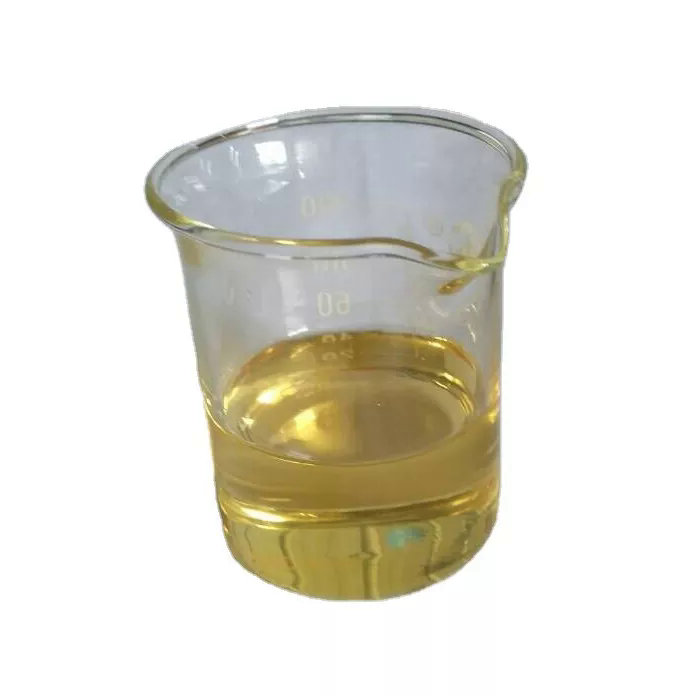BERGAMOT OIL
- CAS NO.:8007-75-8
- Molecular Weight: 0
- MDL number: MFCD00130613
- EINECS: 258-432-2
- Update Date: 2025-12-17 09:49:31
What is BERGAMOT OIL?
Chemical properties
An essential oil. Brownish-yellow to green liquid; agreeable odor; bitter taste.
Chemical properties
Bergamot oil, Italian is obtained by pressing peels from the unripe fruits
of Citrus bergamia Risso et Poit. [syn. Citrus aurantium L. ssp. bergamia
(Risso et Poit.) Wight et Arn., Rutaceae]. It is a green to greenish-yellow liquid,
which sometimes contains a deposit.The oil has a pleasant, fresh, sweet,
fruity odor.
d2020 0.876–0.883; n20D 1.4650–1.4700; α20D +15 ° to +32 °; evaporation
residue: 4.5–6.4%; solubility: 1 vol in ≤1 vol 85% ethanol; acid value:
max. 2; ester value: 86–129; bergapten content by HPLC (high pressure
liquid chromatography): 0.18–0.38%.
The main producer of bergamot oil is Italy, where the fruits are grown
in the province of Calabria. Smaller quantities are available from Argentina
and the Ivory Coast.The quality of the oil is determined by its ester content.
Annual production is ± 100 t/yr.
Linalyl acetate (22–36%), linalool (3–15%), and geranial (0.25–0.5%) are
important components of bergamot oil. Its terpene hydrocarbon content
(25–50%) is relatively low for a citrus oil.
Use of the untreated oil in cosmetics is limited by the photosensitizing
properties of bergaptene (a furocoumarin) present in the oil.Therefore, this
compound is usually removed by distillation or extraction or a combination
of thesemethods; furocoumarin-free bergamot oil is used inmany
perfumes and is an important ingredient in eau de cologne. Bergamot oil is
also used in flavoring food (“Earl Grey tea”).
Chemical properties
A volatile oil obtained by expression, without the aid of heat from the fresh peel of the fruit of Citrus bergamia Risso & Poiteau. One of the constituents of bergamot, bergaptene is a skin sensitizer and some bergamot oil is distilled to produce oils free from bergaptene and terpenes. The major use of bergamot oil is in Earl Grey–type tea flavor, where it is normally the major component.
Chemical properties
The bergamot is a small, delicate tree similar to other citrus plants, such as orange and lemon. The plant flowers twice a year in the spring and the end of summer, and yields orange-like fruits, only smaller in size. The peel of the fresh, nearly ripe fruit is the source of bergamot oil; also used are the fruit, rind, leaf and twig. Although the bergamot plant is native to Asia, it is cultivated extensively in Calabria, Italy. A few experimental cultivations in the Mediterranean basin and on the Atlantic coast of equatorial Africa have attained only a limited success. Bergamot oil is a widely used material that imparts a citrus flavor to foods and beverages. Bergamot has a fragrant, sweet, fruit odor.
Physical properties
It is a clear, mobile, yellowish-green liquid with a fragrant, sweet fruity odor. It is miscible with alcohol and glacial acetic acid. It is soluble in most fixed oils, but is insoluble in glycerin and in propylene glycol. It may contain a suitable antioxidant. Bergamot essential oil yields a concentrated oil by distillation under reduced pressure. Also, terpeneless and sesquiterpeneless oils can be prepared from bergamot essential oil. A petitgrain bergamot is also manufactured by steam distillation of the leaves and twigs.
The Uses of BERGAMOT OIL
bergamot oil (Citrus bergamia) is used as a perfuming ingredient in cosmetic products, it is also considered an antiseptic, calming, healing, and wound-healing. In addition, studies indicate benefit for treating fungal infections of the skin. Sun exposure after applying pure bergamot oil, or a compound with a high bergamot oil concentration to the skin, may cause hyperpigmentation and a skin rash. When used in perfumes, the photosensitizing properties of bergamot are responsible for the hyperpigmentation seen behind the ear and on the neck area near the ear. Manufacturers indicate that bergamot oil can be useful for treating acne, and oily and severely dry skins. The oil extracted from the rind of citrus fruits is referred to as bergamot orange. Its constituents include a-pinene, limonene, a-bergaptene, b-bisabolene, linlool, nerol, geraniol, and a-terpineol.
Preparation
By rectification of bergamot oil expressed, under vacuum, to remove completely the furocoumarins and other related non-volatile residues.
Definition
Extractives and their physically modified derivatives. Citrus bergamia, Citrus.
Essential oil composition
Bergamot oil is a complex mixture of more than 300 compounds. The most prevalent compounds are linalyl acetate (30 to 60%), linalool (11 to 22%) and other alcohols.* Furocoumarins include bergapten (approximately 0.4%), bergamottin, citropten and others. Rectified bergamot oil contains lower concentrations of terpenes and has no coumarins.
Essential oil composition
Rind expressed (or cold pressed) oil (yields 0.5%): Terpenic hydrocarbons (limonene 33 to 42%; γ-terpinene –10%; α-pinene 5 to 9%; β-pinene), terpinic alcohol (linolool 6 to 15%), terpenic ester (linalyl acetate 22 to 52%), furocoumarines (bergaptene 2000 to 4500 ppm; bergamottin) (CoE, 2000)
General Description
Produced and qualified by HWI pharma services GmbH.
Exact content by quantitative NMR can be found on the certificate.
Safety Profile
Mildly toxic by ingestion. A mildskin irritant and allergen. Combustible. When heated todecomposition it emits acrid smoke and irritating fumes.
Properties of BERGAMOT OIL
| Boiling point: | 159 °C(lit.) |
| Density | 0.877 g/mL at 25 °C(lit.) |
| refractive index | n |
| FEMA | 2153 | BERGAMOT OIL (CITRUS AURANTHIUM L. SSP. BERGAMIA) |
| Flash point: | 137 °F |
| color | Yellow-green liquid |
| Odor | agreeable odor |
| EPA Substance Registry System | Bergamot oil (8007-75-8) |
Safety information for BERGAMOT OIL
| Signal word | Danger |
| Pictogram(s) |
 Flame Flammables GHS02  Exclamation Mark Irritant GHS07  Health Hazard GHS08 |
| GHS Hazard Statements |
H226:Flammable liquids H304:Aspiration hazard H315:Skin corrosion/irritation |
| Precautionary Statement Codes |
P210:Keep away from heat/sparks/open flames/hot surfaces. — No smoking. P302+P352:IF ON SKIN: wash with plenty of soap and water. |
Computed Descriptors for BERGAMOT OIL
BERGAMOT OIL manufacturer
New Products
4,4-Difluoropiperidine hydrochloride tert-butyl 9-methoxy-3-azaspiro[5.5]undecane-3-carboxylate Indole Methyl Resin N-Isopropylurea N,N-Dicyclohexylcarbodiimide(DCC) MELDRUMS ACID 5-METHYLISOXAZOLE-4-CARBOXYLIC ACID Magnessium Bis glycinate Zinc ascorbate 1-bromo-2-butyne 2-acetamidophenol 9(10H)-anthracenone Erythrosin B, 4-Piperidinopiperidine 2-((4-morpholinophenylamino) (methylthio) methylene) malononitrile 2,4-dihydroxybenzaldehyde 3-(4-morpholinophenylamino)-5-amino-1H-pyrazole-4-carbonitrile Methyl 2-methylquinoline-6-carboxylate 2,6-dichloro-4-nitropyridine 4-Bromo-2-chlorobenzonitrile 2-(benzylamino)acetic acid hydrochloride 4-(tert-Butoxycarbonylamino)but- 2-ynoic acid 3,4-dihydro-2H-benzo[b][1,4]dioxepine 1-Phenyl-1-cycloprppanecarboxylicacidRelated products of tetrahydrofuran








You may like
-
 8007-75-8 Bergamot oil 98%View Details
8007-75-8 Bergamot oil 98%View Details
8007-75-8 -
 8007-75-8 98%View Details
8007-75-8 98%View Details
8007-75-8 -
 Bergamot oil 98%View Details
Bergamot oil 98%View Details
8007-75-8 -
 Bergamot oil 8007-75-8 98%View Details
Bergamot oil 8007-75-8 98%View Details
8007-75-8 -
 8007-75-8 98%View Details
8007-75-8 98%View Details
8007-75-8 -
 Oil bergamot CAS 8007-75-8View Details
Oil bergamot CAS 8007-75-8View Details
8007-75-8 -
 Bergamot oil, italy origin CAS 8007-75-8View Details
Bergamot oil, italy origin CAS 8007-75-8View Details
8007-75-8 -
 Bergamot oil CAS 8007-75-8View Details
Bergamot oil CAS 8007-75-8View Details
8007-75-8
